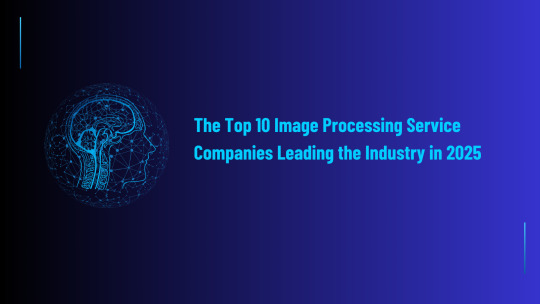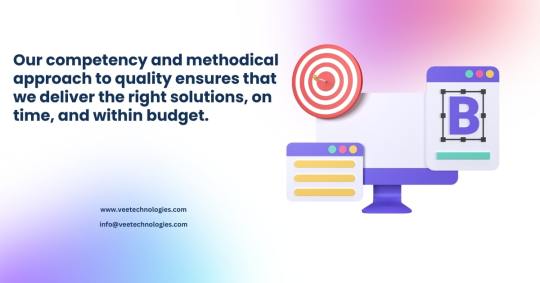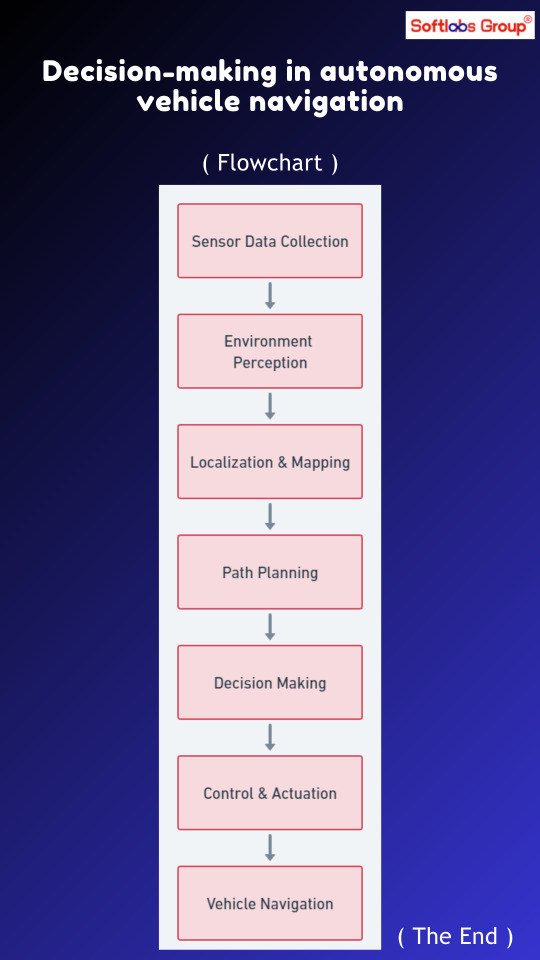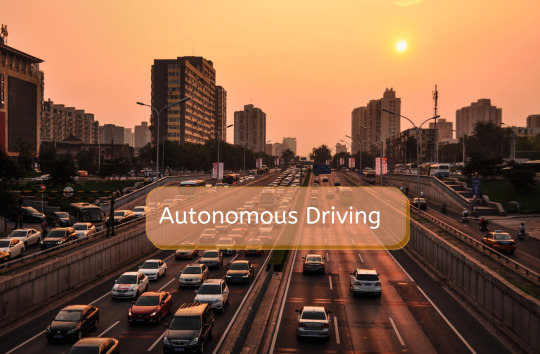#objectdetection
Explore tagged Tumblr posts
Text
Whitepaper: 7 Usecases for Touchscreen Object Recognition

The recognition of objects on large-scale touch screens picks up the well-known principle of cashier systems barcodes and takes it to a new level: objects which are equipped with a special marker chip or printed code can be detected and processed from multi-touch displays in real-time.
In this article:
Instant information
Personalization
Product Comparison
Special access
Save & transfer data
Natural user interface
Games & effects
Read the full article here:
Whitepaper: 7 Usecases for Touchscreen Object Recognition
Find more information here:
Interactive Signage Touchscreen Solutions XXL (eyefactive GmbH)
Touchscreen Software App Platform
Touchscreen Object Recognition
Smart Retail Signage Solutions
2 notes
·
View notes
Text
Real Estate Data Annotation Services

HitechDigital delivers comprehensive real estate data labeling services designed to accelerate your AI initiatives. Our expertise includes high-quality property image annotation and real estate AI annotation for tasks such as property recognition and classification, enabling your models to accurately identify property types, architectural styles, and key features.
0 notes
Text
The Top 10 Image Processing Service Companies Leading the Industry in 2025

In today’s technology-driven world, Image Processing is revolutionizing industries by transforming raw visual data into actionable insights. From automating quality checks in manufacturing to enhancing diagnostic accuracy in healthcare, image processing services are pivotal in driving efficiency and innovation. Numerous companies worldwide have emerged as leaders in Digital Image Processing, leveraging advanced technologies to cater to diverse industrial needs.
Here’s a detailed look at the top 10 companies excelling in Image Processing and why they stand out in 2025.
1. Vee Technologies
Vee Technologies leads the way in offering innovative and customized image processing services for various sectors. Their expertise spans image enhancement, object detection, and remote sensing, helping industries achieve precision and efficiency.
The company is also a pioneer among Facial Recognition development companies in India, providing advanced biometric systems to enhance security and customer engagement. Vee Technologies’ contributions to Digital Image Processing India are instrumental in transforming industries such as healthcare, retail, and logistics. Their team combines technical excellence with deep industry knowledge, ensuring that clients receive cutting-edge solutions tailored to their needs.
2. Infosys
Infosys is a global IT leader with a strong foothold in Digital Image Processing. The company’s AI-driven solutions focus on applications like video analytics, 3D modeling, and image segmentation. Infosys has successfully implemented image processing solutions in sectors such as retail, automotive, and healthcare, helping businesses improve operational efficiency and customer experiences.
3. Wipro
Wipro’s image processing services are built on a foundation of innovation and cutting-edge technology. The company specializes in real-time image processing, noise reduction, and object tracking for applications like manufacturing and surveillance. Wipro’s ability to integrate AI and machine learning into their solutions has made them a reliable partner for businesses looking to modernize their operations.
4. Cognizant
Cognizant has emerged as a key player in Image Processing, offering advanced solutions like facial recognition, video content analysis, and pattern recognition. Their services are widely used in logistics, security, and e-commerce. Cognizant’s commitment to leveraging AI and data analytics ensures high accuracy and efficiency in all their image processing projects.
5. HCL Technologies
HCL Technologies is a prominent name in Digital Image Processing India, providing top-tier services for industries like healthcare, automotive, and geospatial analysis. Their offerings include 3D reconstruction, image annotation, and defect detection, helping businesses improve product quality and streamline operations.
6. Tata Consultancy Services (TCS)
TCS combines its expertise in AI, cloud computing, and Digital Image Processing to deliver innovative solutions for global clients. Their services include fraud detection, personalized marketing, and video analytics, with applications in e-commerce, finance, and public safety. TCS’s ability to handle large-scale projects with precision makes them a trusted partner for businesses worldwide.
7. Accenture
Accenture’s image processing services focus on improving decision-making and operational efficiency through AI-powered solutions. The company excels in image classification, pattern recognition, and real-time analytics, catering to industries such as logistics, healthcare, and retail. Accenture’s commitment to innovation has positioned it as a leader in delivering high-value image processing solutions.
8. Tech Mahindra
Tech Mahindra is one of the leading Facial Recognition development companies in India, providing robust image analytics and processing services. Their expertise in biometric solutions and security systems has made them a go-to partner for government projects, public safety initiatives, and retail applications. Tech Mahindra’s focus on integrating AI into image processing ensures that their solutions are both effective and future-ready.
9. IBM
IBM leverages its AI and cloud capabilities to deliver powerful Image Processing solutions. From video content analysis to object detection and image classification, IBM’s services are widely used in industries like media, healthcare, and transportation. IBM’s ability to handle complex image processing tasks with precision and efficiency sets it apart from its competitors.
10. Capgemini
Capgemini provides comprehensive image processing services, focusing on automation, accuracy, and real-time analytics. Their solutions cater to industries such as telecom, manufacturing, and logistics, helping businesses improve efficiency and reduce costs. Capgemini’s expertise in AI and data analytics ensures that their image processing services deliver tangible results for their clients.
Conclusion
The demand for image processing services continues to grow as businesses recognize its potential to drive innovation and efficiency. From enhancing security through facial recognition to improving healthcare diagnostics, Digital Image Processing is shaping the future across industries.
The companies listed above, including leaders in Digital Image Processing India and globally, are paving the way with cutting-edge solutions that cater to diverse needs. As industries evolve, the role of Image Processing in transforming operations and improving outcomes will only expand.
Whether you're a small business or a global enterprise, partnering with a reliable image processing service provider is essential to stay competitive in today's data-driven world.
#ImageProcessing#ImageProcessingServices#DigitalImageProcessing#AI#MachineLearning#DeepLearning#FacialRecognition#ImageAnalysis#ObjectDetection#VisualComputing
0 notes
Text
The Top 10 Image Processing Service Companies Leading the Industry in 2025

In today’s technology-driven world, Image Processing is revolutionizing industries by transforming raw visual data into actionable insights. From automating quality checks in manufacturing to enhancing diagnostic accuracy in healthcare, image processing services are pivotal in driving efficiency and innovation. Numerous companies worldwide have emerged as leaders in Digital Image Processing, leveraging advanced technologies to cater to diverse industrial needs.
Here’s a detailed look at the top 10 companies excelling in Image Processing and why they stand out in 2024.
1. Vee Technologies
Vee Technologies leads the way in offering innovative and customized image processing services for various sectors. Their expertise spans image enhancement, object detection, and remote sensing, helping industries achieve precision and efficiency.
The company is also a pioneer among Facial Recognition development companies in India, providing advanced biometric systems to enhance security and customer engagement. Vee Technologies’ contributions to Digital Image Processing India are instrumental in transforming industries such as healthcare, retail, and logistics. Their team combines technical excellence with deep industry knowledge, ensuring that clients receive cutting-edge solutions tailored to their needs.
2. Infosys
Infosys is a global IT leader with a strong foothold in Digital Image Processing. The company’s AI-driven solutions focus on applications like video analytics, 3D modeling, and image segmentation. Infosys has successfully implemented image processing solutions in sectors such as retail, automotive, and healthcare, helping businesses improve operational efficiency and customer experiences.
3. Wipro
Wipro’s image processing services are built on a foundation of innovation and cutting-edge technology. The company specializes in real-time image processing, noise reduction, and object tracking for applications like manufacturing and surveillance. Wipro’s ability to integrate AI and machine learning into their solutions has made them a reliable partner for businesses looking to modernize their operations.
4. Cognizant
Cognizant has emerged as a key player in Image Processing, offering advanced solutions like facial recognition, video content analysis, and pattern recognition. Their services are widely used in logistics, security, and e-commerce. Cognizant’s commitment to leveraging AI and data analytics ensures high accuracy and efficiency in all their image processing projects.
5. HCL Technologies
HCL Technologies is a prominent name in Digital Image Processing India, providing top-tier services for industries like healthcare, automotive, and geospatial analysis. Their offerings include 3D reconstruction, image annotation, and defect detection, helping businesses improve product quality and streamline operations.
6. Tata Consultancy Services (TCS)
TCS combines its expertise in AI, cloud computing, and Digital Image Processing to deliver innovative solutions for global clients. Their services include fraud detection, personalized marketing, and video analytics, with applications in e-commerce, finance, and public safety. TCS’s ability to handle large-scale projects with precision makes them a trusted partner for businesses worldwide.
7. Accenture
Accenture’s image processing services focus on improving decision-making and operational efficiency through AI-powered solutions. The company excels in image classification, pattern recognition, and real-time analytics, catering to industries such as logistics, healthcare, and retail. Accenture’s commitment to innovation has positioned it as a leader in delivering high-value image processing solutions.
8. Tech Mahindra
Tech Mahindra is one of the leading Facial Recognition development companies in India, providing robust image analytics and processing services. Their expertise in biometric solutions and security systems has made them a go-to partner for government projects, public safety initiatives, and retail applications. Tech Mahindra’s focus on integrating AI into image processing ensures that their solutions are both effective and future-ready.
9. IBM
IBM leverages its AI and cloud capabilities to deliver powerful Image Processing solutions. From video content analysis to object detection and image classification, IBM’s services are widely used in industries like media, healthcare, and transportation. IBM’s ability to handle complex image processing tasks with precision and efficiency sets it apart from its competitors.
10. Capgemini
Capgemini provides comprehensive image processing services, focusing on automation, accuracy, and real-time analytics. Their solutions cater to industries such as telecom, manufacturing, and logistics, helping businesses improve efficiency and reduce costs. Capgemini’s expertise in AI and data analytics ensures that their image processing services deliver tangible results for their clients.
Conclusion
The demand for image processing services continues to grow as businesses recognize its potential to drive innovation and efficiency. From enhancing security through facial recognition to improving healthcare diagnostics, Digital Image Processing is shaping the future across industries.
The companies listed above, including leaders in Digital Image Processing India and globally, are paving the way with cutting-edge solutions that cater to diverse needs. As industries evolve, the role of Image Processing in transforming operations and improving outcomes will only expand.
Whether you're a small business or a global enterprise, partnering with a reliable image processing service provider is essential to stay competitive in today's data-driven world.
#ImageProcessing#ImageProcessingServices#DigitalImageProcessing#AI#MachineLearning#DeepLearning#FacialRecognition#ImageAnalysis#ObjectDetection#VisualComputing
0 notes
Text
Image Processing Services - Vee Technologies

Focused on helping business with image processing services in a variety of industries, they work in business-centric ways to develop image processing solutions that cover a range of services such as image scanning, indexing, enhancement and conversion to impact business growth.
Explore More: https://www.veetechnologies.com/services/it-services/artificial-intelligence/image-processing.htm
#ImageProcessing#ImageProcessingServices#DigitalImageProcessing#AI#MachineLearning#DeepLearning#FacialRecognition#ImageAnalysis#ObjectDetection#VisualComputing
0 notes
Text
Vee Technologies' Image Processing Services

Focused on helping business with image processing services in a variety of industries, we work in business-centric ways to develop image processing solutions that cover a range of services such as image scanning, indexing, enhancement and conversion to impact business growth.
Explore More: https://www.veetechnologies.com/services/it-services/artificial-intelligence/image-processing.htm
#ImageProcessing#ImageProcessingServices#DigitalImageProcessing#AI#MachineLearning#DeepLearning#FacialRecognition#ImageAnalysis#ObjectDetection#VisualComputing#VeeTechnologies
0 notes
Text
Improve your AI models with accurate image labeling and annotation services, offering detailed object detection, segmentation, and secure data handling. Tailored to sectors like healthcare, retail, and automotive, these services support precise, scalable solutions for more effective machine learning.
Experience the difference with expert-driven, high-quality annotations that bring clarity and insight to your data projects.
Know More About Our Services Here
0 notes
Text
instagram
AI kaise visual quality ko inspect karta hai. . . .
For more AI related updates, follow @trillionstech.ai_hindi
0 notes
Text

🔍🚨 Beyond the Basics: Advanced Security Camera Features Explained 🚨🔍
Hello Los Angeles! 🌟
At DSMLA CCTV Installer, we know that a robust security system goes beyond just basic surveillance. Modern security cameras are equipped with advanced features that significantly enhance protection for your home or business. Let’s dive into some lesser-known features like facial recognition, object detection, and perimeter alerts, and see how they can take your security to the next level. 📹🏡
🔍 Advanced Security Camera Features: 🔍
Facial Recognition:
Identify Intruders: Automatically recognize and flag unknown individuals, helping to identify potential threats quickly.
Authorized Access: Create a database of trusted individuals to allow seamless access for family members, employees, or regular visitors.
Custom Alerts: Receive specific notifications when certain faces are detected, enhancing monitoring efficiency.
Object Detection:
Monitor Specific Objects: Set your cameras to detect and alert you about specific objects, such as unattended bags or valuable items.
Prevent Theft: Automatically track the movement of high-value items within your premises to prevent theft or misplacement.
Custom Rules: Configure rules for different scenarios, such as alerting when a restricted item enters or leaves a designated area.
Perimeter Alerts:
Secure Boundaries: Define virtual perimeters around your property and receive instant alerts when someone crosses these boundaries.
Proactive Monitoring: Detect intruders before they reach your building, giving you time to respond quickly and effectively.
Adjustable Zones: Customize alert zones to focus on critical areas like entrances, driveways, or backyards.
Smart Analytics:
Behavior Analysis: Analyze patterns and behaviors to identify unusual activities, such as loitering or sudden movements.
Heat Mapping: Visualize areas with the most activity to optimize camera placement and enhance coverage.
Crowd Detection: Monitor crowd density and receive alerts when the number of people in an area exceeds a certain threshold, useful for events or public spaces.
Integration with Smart Home Devices:
Seamless Control: Integrate your security cameras with other smart home devices like lights, locks, and alarms for a comprehensive security system.
Automated Responses: Set up automated actions, such as turning on lights when motion is detected or locking doors when an intruder is identified.
Unified Management: Control all your smart devices and security cameras from a single app for ease of use and efficiency.
🔒 How These Features Enhance Security: 🔒
Enhanced Detection: Advanced features provide more accurate and reliable detection of potential threats, reducing false alarms and ensuring prompt responses.
Proactive Alerts: Receive instant notifications about specific events or activities, allowing you to take immediate action.
Increased Safety: Protect your property and loved ones with intelligent monitoring that adapts to your unique security needs.
Improved Efficiency: Smart analytics and integration with other devices streamline your security system, making it more effective and user-friendly.
At DSMLA CCTV Installer, we specialize in implementing these advanced features to provide you with a cutting-edge security solution tailored to your needs. Whether you’re looking to secure your home or business, our expert team is here to help you every step of the way. 🚀🔒
Ready to upgrade your security system with advanced features? Contact us today!
📞 Call us: 310-901-4972 📍 Location: Los Angeles, CA
Stay ahead of the curve with DSMLA CCTV Installer!
#AdvancedSecurity#FacialRecognition#ObjectDetection#PerimeterAlerts#SmartAnalytics#CCTV#DSMLACCTVInstaller#LosAngeles#HomeSecurity#BusinessSecurity#CuttingEdgeSecurity
0 notes
Text

Explore the decision-making process in autonomous vehicle navigation with our informative flowchart. Follow steps including perception, localization, mapping, path planning, and control. Simplify the complex process of ensuring safe and efficient navigation for autonomous vehicles. Perfect for engineers, researchers, and enthusiasts in autonomous driving technology. Stay informed with Softlabs Group for more insights into the future of transportation!
0 notes
Text

Exploring the Canvas of Wonders! Discover the magic of object detection. (Note: This is a test on stylized AI Animation using the pretrained model)
0 notes
Text

Image Annotation For Person Detection
Introducing cutting-edge image annotation technology for precise person detection. Keep a watchful eye on your surroundings with unparalleled accuracy and efficiency. Our system employs state-of-the-art algorithms to identify individuals swiftly and reliably, ensuring maximum security and peace of mind.
Experience the power of advanced person detection today and elevate your surveillance capabilities to new heights! Contact us now for a personalized demo and take the first step towards a safer tomorrow.
#personannotation#persondetection#imageannotation#boundingbox#objectdetection#machinelearning#computervision#wisepl#annotationservice#AI
0 notes
Text

Detect construction workers, identify vehicles, and ensure PPE compliance with precision. Enhance workplace safety, streamline operations, and boost productivity. Click here https://www.opticvyu.com/products/custom-object-detection-image-processing-ai to discover more about OpticVyu's AI solution.
0 notes
Text
Image Processing Services - Vee Technologies

Focused on helping business with image processing services in a variety of industries, they work in business-centric ways to develop image processing solutions that cover a range of services such as image scanning, indexing, enhancement and conversion to impact business growth.
Explore More: https://www.veetechnologies.com/services/it-services/artificial-intelligence/image-processing.htm
#ImageProcessing#ImageProcessingServices#DigitalImageProcessing#AI#MachineLearning#DeepLearning#FacialRecognition#ImageAnalysis#ObjectDetection#VisualComputing
0 notes
Text
Vee Technologies' Image Processing Services

Focused on helping business with image processing services in a variety of industries, they work in business-centric ways to develop image processing solutions that cover a range of services such as image scanning, indexing, enhancement and conversion to impact business growth.
Explore More: https://www.veetechnologies.com/services/it-services/artificial-intelligence/image-processing.htm
#ImageProcessing#ImageProcessingServices#DigitalImageProcessing#AI#MachineLearning#DeepLearning#FacialRecognition#ImageAnalysis#ObjectDetection#VisualComputing
0 notes
Text
Data Annotation Types to execute Autonomous Driving

Autonomous vehicles are still working towards reaching the stage of full autonomy. A fully functioning and safe autonomous vehicle must be competent in a wide range of machine learning processes before it can be trusted to drive on its own. From processing visual data in real-time to safely coordinating with other vehicles, the need for AI is essential. Self-driving cars could not do any of this without a huge volume of different types of training data, created and tagged for specific purposes.
Due to the several existing sensors and cameras, advanced automobiles generate a tremendous amount of data. We cannot use these datasets effectively unless they are correctly labeled for subsequent processing. This could range from simple 2D bounding boxes all the way to more complex annotation methods, such as semantic segmentation.
There are various image annotation types such as Polygons, bounding boxes, 3D cuboids, Semantic Segmentation, Lines, and Splines that can be incorporated into autonomous vehicles. These annotation methods help in achieving greater accuracy for autonomous driving algorithms. However, which annotation method is best suited for you must be chosen according to the requirements of your project.
Types of Annotation for Autonomous Driving
Below we have discussed all types of annotation required to make the vehicle autonomous.
2D bounding Box Annotation
The bounding box annotation technique is used to map objects in a given image/video to build datasets thereby enabling ML models to identify & localize objects.2D boxing is rectangular, and among all the annotation tools, it is the simplest data annotation type with the lowest cost. This annotation type is preferred in less complex cases and also if you are restricted by your budget. This is not trusted to be the most accurate type of annotation but saves a lot of labeling time. Common labeling objects include: Vehicles, Pedestrian, Obstacles, Road signs, Signal lights, Buildings and Parking zone.
3D Cuboid Annotation
Similar to the bounding boxes that were previously discussed, this type involves the annotator drawing boxes around the objects in an image. The bounding boxes in this sort of annotation, as the name implies, are 3D, allowing the objects to be annotated on depth, width, and length (X, Y, and Z axes). An anchor point is placed at each edge of the object after the annotator forms a box around it. Based on the characteristics of the object and the angle of the image, the annotator makes an accurate prediction as to where the edge maybe if it is missing or blocked by another object. This estimation/ annotation plays a vital role in judging the distance of the object from the car based on the depth and detecting the object’s volume and position.
Polygon Annotation
It can occasionally be challenging to add bounding boxes around specific items in an image due to their forms and sizes. In photos and movies with erratic objects, polygons provide precise object detection and localization. Due to its precision, it is one of the most popular annotation techniques. However, the accuracy comes at a price because it takes longer than other approaches. Beyond a 2D or 3D bounding box, irregular shapes like people, animals, and bicycles need to be annotated. Since polygonal annotation allows the annotator to specify additional details such as the sides of a road, a sidewalk, and obstructions, among other things, it can be a valuable tool for algorithms employed in autonomous vehicles.
Semantic Segmentation
We’ve looked at defining objects in images up to this point, but semantic segmentation is far more accurate than other methods. It deals with assigning a class to each pixel in an image. For a self-driving automobile to function well in a real-world setting, it must comprehend its surroundings. The method divides the items into groups like bicycles, people, autos, walkways, traffic signals, etc. Typically, the annotator will have a list made up of these. In conclusion, semantic segmentation locates, detects, and classifies the item for computer vision. This form of annotation demands a high degree of accuracy, where the annotation must be pixel-perfect.
Lines and Splines Annotation
In addition to object recognition, models need to be trained on boundaries and lanes. To assist in training the model, annotators drew lines in the image along the lanes and edges. These lines allow the car to identify or recognize lanes, which is essential for autonomous driving to succeed since it enables the car to move through traffic with ease while still maintaining lane discipline and preventing accidents.
Video Annotation
The purpose of video annotation is to identify and track objects over a collection of frames. The majority of them are utilized to train predictive algorithms for automated driving. Videos are divided into thousands of individual images, with annotations placed on the target object in each frame. In complicated situations, single frame annotation is always employed since it can ensure quality. At this time, machine learning-based object tracking algorithms have already helped in video annotation. The initial frame’s objects are annotated by the annotator, and the following frames’ items are tracked by the algorithm. Only when the algorithm doesn’t work properly does the annotator need to change the annotation. As labor costs decrease, clients can save a greater amount of money. In basic circumstances, streamed frame annotation is always employed.
Use Cases of Autonomous Driving
The main goal of data annotation in automotive is to classify and segment objects in an image or video. They help achieve precision, which to automotive is important, given that it is a mission-critical industry, and the accuracy, in turn, determines user experience. This process is essential because of the use cases it enables:
Object and vehicle detection: This crucial function allows an autonomous vehicle to identify obstacles and other vehicles and navigate around them. Various types of annotation are required to train the object detection model of autonomous driving so that it can detect persons, vehicles, and other obstacles coming in its way.
Environmental perception: Annotators use semantic segmentation techniques to create training data that labels every pixel in a video frame. This vital context allows the vehicle to understand its surroundings in more detail. It’s important to have a complete understanding of its location and everything surrounding it to make a safe drive.
Lane detection: Autonomous vehicles need to be able to recognize road lanes so that they can stay inside of them. This is very important to avoid any accidents. Annotators support this capability by locating road markings in video frames.
Understanding signage: The vehicle must be able to recognize all the signs and signals on the road to predict when and where to stop, take a turn, and many related objectives. Autonomous vehicles should automatically detect road signs and respond to them accordingly. Annotation services can enable this use case with careful video labeling.
Conclusion
Although it takes a lot of effort, delivering Ground Truth quality annotation for self-driving cars is crucial to the project’s overall success. Get the best solutions by using precise annotations created by TagX to train and validate your algorithms.
We are the data annotation experts for autonomous driving. We can help with any use case for your automated driving function, whether you’re validating or training your autonomous driving stack. Get in contact with our specialists to learn more about our automobile and data annotation services as well as our AI/ML knowledge.
#ObjectDetection#LaneMarkingAnnotation#SemanticSegmentation#3DAnnotation#artificial intelligence#machinelearning#dataannotation
0 notes